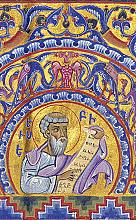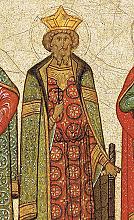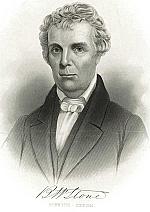Russian Christianity and the revolution: what happened?

[Anonymous, Religion Hinders the Five-Year Plan, Late 1920s to Early 1930s. Color lithograph, Moscow—Russian State Library / Public domain, Wikimedia]
In its original 1988 printing, this article delved into the past even as Russia was enduring its grievous consequences—the USSR did not officially collapse until 1991. We’ve updated and condensed this article, but its applications of hope and warning have us reaching for this powerful story 35 years later.
It was once known as “Holy Russia,” a land blossoming with the multidomed church buildings so associated with the eastern Slavs’ Orthodox Christianity, a land pregnant with spiritual heritage and strongly in touch with the oldest traditions of the faith. But around the turn of the twentieth century, something drastic happened.
One year after March 1917, when the last tsar abdicated, militant atheists seized power, leading to the looting of churches, the mocking of religion, and even the murder of priests, monks, and believers by the thousands.
To ascribe it all to “the Revolution” begs the question. In fact more than one revolution had occurred in Russia in the first decades of the twentieth century. Anti-tsarist uprisings in 1905 led to a constitutional government with an elected legislature, the Duma, ushering in liberal reform. The March 1917 revolution saw the formation of a provisional government of mainly moderate liberals. None of this directly threatened the church or religion; instead, Russia experienced a spiritual revival.
But the rise and revolution of the Bolsheviks caught the Russian Orthodox Church (ROC) by surprise. At first the tsar’s abdication seemed to some a chance to free themselves from state control, providing an opportunity to reestablish the patriarchate suppressed by Tsar Peter in 1721. But the Bolsheviks, at first a small, conspiratorial party, aimed to smash both church and state.
An unprepared church
Their success hinged on the ROC’s close identification with the state, which prevented it from exercising an independent—and therefore credible—moral authority. Moreover, in an empire only half ethnically Russian, the March revolution provided an opportunity for other predominantly Orthodox peoples, such as the Byelorussians and the Ukrainians, to revive their own traditional churches, long suppressed by the tsars. Other traditions, like the Evangelicals and the Baptists, persecuted previously, also benefited from the revolution—at first. The Bolsheviks initially tolerated them because they weakened the established Orthodox Church. Later, of course, they would try to destroy those churches as well.
Bolsheviks also capitalized on the peasant population’s passivity and latent anticlericalism. Life was precarious enough, and opposing any authority, tsarist or Bolshevik, was dangerous. The brutalizing poverty of village life won the party active support. After all, the Russian Provisional Government only talked about taking land from the rich landowners and giving it to the peasants; the Bolsheviks encouraged it. Alas, one of the largest landowners happened to be the church.
The party propagated this image of the church as wealthy exploiter during the famine of 1920–1921. Though the ROC set up a relief fund and contributed generously to it, the church exempted from its donations objects used in worship. Seizing on this the Bolsheviks organized their own relief effort, then commanded the church to turn over its sacramental objects. When it refused the Bolsheviks put its leaders on trial for refusing to help the hungry.
Bolshevism soon entered the church through Russian Orthodox seminaries, which became hotbeds of radicalism. Some within the ROC eventually formed the Renovationist Church, which the Bolsheviks manipulated and controlled. When the ROC’s Patriarch Tikhon died, they persuaded his successor, Metropolitan Sergei, to declare the church’s loyalty to the Soviet state in 1927. After this the Bolsheviks suppressed the Renovationists.
The tragedy of the Bolsheviks’ take-over of Christian land reverberates even today. Still, Christianity survived in the USSR—yes, it even flourished there. For the eastern Slavs, Soviet rule was just one more passing trial in the 10-century story of their long-suffering faith.—Andrew Sorokowski, from CH #18
By Andrew Sorokowski
[Christian History originally published this article in Christian History Issue #150 in 2024]
Andrew Sorokowski is a retired lawyer, government historian, and academic specialist on the modern history of Ukraine.Next articles
Recommended resources: Stories worth retelling
We covered a lot of ground in this issue of CH! Here are just a few resources we recommend to learn more.
the authors and editorsSupport us
Christian History Institute (CHI) is a non-profit Pennsylvania corporation founded in 1982. Your donations support the continuation of this ministry
Donate







